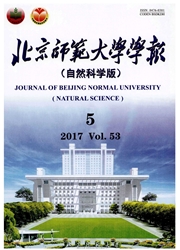

 中文摘要:
中文摘要:
对69个中国儿童(7~16岁)的脑结构磁共振图像,用改进的优化方法建立了中国儿童T1脑模板和先验概率图.并用整脑覆盖率和基于像素分析这2种方法评估了本文建立的中国儿童脑模板.评估过程是:用12个中国儿童个体(不包括在建模板的69个儿童中)的磁共振结构像分别空间标准化到蒙特利尔神经学院(MNI)的成人模板、辛辛那提儿童医院医学中心(CCHMC)的西方儿童模板和中国儿童模板,并对结果进行比较.在线性标准化过程中,用这3个模板的结果很类似,在非线性标准化过程中,用中国儿童模板的形变最小.结果表明:对于中国儿童个体,在空间标准化时,用中国儿童脑模板更合适.这将有助于了解中国儿童脑的结构特点,为中国儿童脑信息处理、分析以及脑疾病的辅助诊断提供一定的依据.
 英文摘要:
英文摘要:
The Chinese pediatric T1 brain template and apriori maps are constructed using improved optimized protocol from sixty-nine Chinese children (7-16 years old) magnetic resonance imaging (MRI) data. Then the Chinese pediatric brain template is assessed using two methods: 1) Overlapping ratio of whole brain; 2) voxel-based analysis. During the spatial normalization of 12 Chinese children (not included in the children used to construct template) MRI data, the Montreal Neurological Institute (MNI) adult template, Cincinnati Children's Hospital Medical Center (CCHMC) western pediatric template and Chinese pediatric template are compared. The results of the three templates are similar in the linear normalization. However the deformation of the Chinese pediatric template is the least in the nonlinear normalization. These results show that the Chinese pediatric template is more adequate to Chinese children in spatial normalization. It will help realizing the structure characteristics of Chinese pediatric brains. It will provide the basis for the information processing and analysis of Chinese pediatric brains and for the assistant diagnosis of brain diseases.
 同期刊论文项目
同期刊论文项目
 同项目期刊论文
同项目期刊论文
 期刊信息
期刊信息
